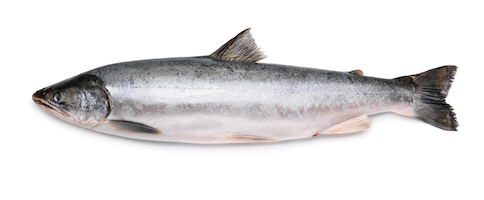Arctic Charr Features and Size

The Arctic Charr is a long and slender fish with a small, pointed head.
It’s characterized by light-colored spots on its body below the lateral line, extending to the leading edges of all fins. The lower part of the body is a soft white.
It has an adipose fin, an axillary process at the base of each pelvic fin and a slightly forked tail. Another distinction of the fish is that it has very fine scales that are deeply embedded that the skin has a smooth soft touch.
Coloration is different between the seagoing and land locked Arctic Charr. However that being said, the Arctic Charr is essentially silver for nonspawning charr. The back and upper sides are deep green or blue and have a white belly.
Spawning Male Arctic Char
The spawning males have a bright red or reddish-orange coloration on the sides while the under side and the lower fins are muted. A spawning male of some populations will develop a kype while some have humped backs.
Spawning Female Arctic Char
Spawning females are less intense with their red coloring. The red coloring is only on their flanks and bellies while their backs remain bluish or greenish.
Arctic Charr Size
Arctic charr, despite the cold climate, can grow quite large reaching as long as 3 feet/one metre and can live as log as 30 years. This is astonishing when you consider that the average salmon matures at age 4 and usually don’t live past 5 or 6 years.
The largest sea-run charr grows much larger than the landlocked Arctic Char. The all-tackle world record is 32 pounds, 9 ounces. It was caught in Tree River, Northwest Territories in 1981.
The average size of sea-run arctic charr is between 7 and 11 pounds. The landlocked Arctic Charr is typically a few pounds smaller due to limited food availability, especially in the winter months.



